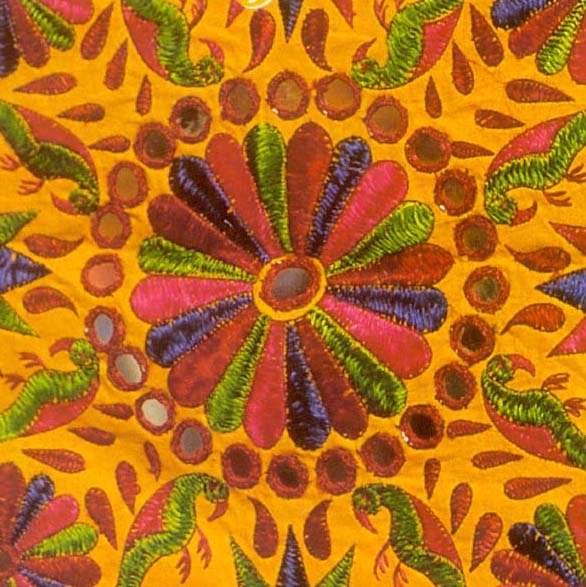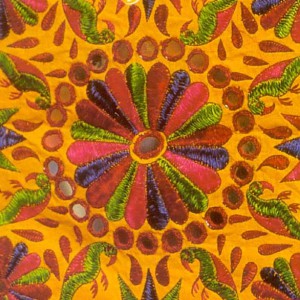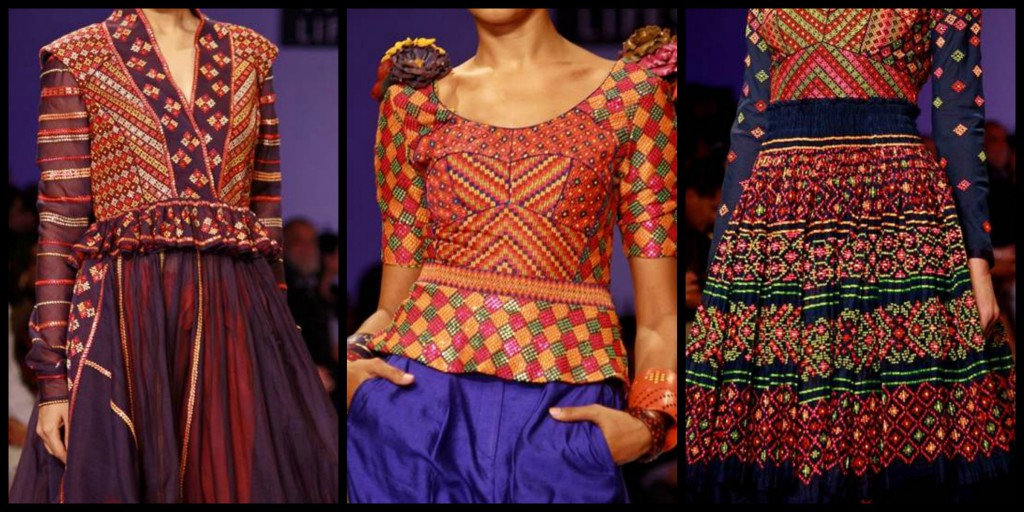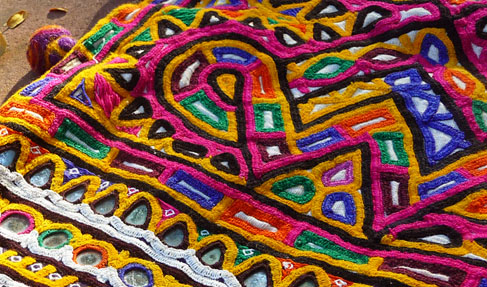
Kutch Embroidery
It is rightly said that Gujarat has given India the greatest heritage in embroidery work and craft through its famous and versatile Kutch embroidery. The hub of the Kutch embroidery work is basically located in the regions of Kutch and Saurashtra wherein the local artisans churn out the most creative and exquisite designs.
From mirror and bead work to Abhala embroidery along with the usage of silk threads of bright colors, the Kutch embroidery basically ornate the entire fabric and embellishes it completely. The impeccable designs of Kutch embroidery is a tribute to Rabaris, a nomadic tribe that crafted the art of Kutch embroidery which is now an artwork of international repute.
Origin & History
Historically, it is said that Kutch embroidery was brought about by ‘Kathi’ cattle breeders who later settled down and created some fine needlework which displayed a variety of elements, designs, themes, patterns and moods. Kutch embroidery has been there for centuries and in the 16th and 17th centuries Kutch embroidery pieces were exported by western countries. It is also believed that mochis or shoemakers were taught Kutch embroidery 300 years ago by a Muslim wanderer in Sindh and that is what started the tradition. However, Kutch embroidery clubbed with Sindh tradition owns styles such as Suf, Khaarek, and Paako, Rabari, Garasia Jat and Mutava.
Sources of Inspiration
A lot of the Kutch embroidery is influenced by various architectural designs and motifs such as the ‘Heer bharat’. Using the Heer Bharat as a mirror is easily fixed in the center that adds more beauty to the embroidery work. Kutch embroidery is mainly done in colors such as Green, Ivory, Indigo, Black, Deep red, Yellow and off White.
This embroidery is also influenced by romantic motifs as well as patterns of human figurines in dancing poses and dancing peacocks too. A lot of motifs are also inspired by Persian and Mughal arts that are inspired by animals. Delicate beadwork is also incorporated with great finesse. The work is done on fabrics such as Cotton and Silk.
Styles & Variety
There are seven distinctive styles of Singh-Kutch embroidery namely Suf, Khaarek, and Paako, Rabari, Garasia Jat and Mutava.
Suf: This embroidery is based on the triangle called ‘Suf’ which is counted on the warp and weft of the cloth where the stitch is worked from the back. Artisans never draw the designs on paper instead they straight away stitch. Their designs display immense detail in filling symmetrical patterns with tiny triangles.
Khaarek: This is a geometric style where the artisans work out the structure of geomtric patterns with an outline of black squares, then fill the spaces with bands of satin stitching that are worked along warp and weft from the front. Khaarek embroidery fills the entire fabric.
Paako: Paako means solid therefore it is a tight square chain and double buttonhole stitch embroidery. It is often finished with black slanted satin outlining. The motifs of paako are primarily floral arranged in symmetric patterns which are sketched in mud with needles beforehand.
Rabari: Rabari has mirrors in a variety of shapes and patterns in chain stitch. It is then decorated with a sequence of stitches in vibrant colors. Artisans also use decorative back stitching, called bakhiya, to decorate men’s kediya/ jackets and the seams of women’s blouses.
Jat: Derived from Garasia Jats who were Islamic pastoralists who originated outside of Kutch. Garasia women make geometric patterns in counted work based on cross stitch studded fabric with minute mirrors.
Mutava: These are a small group of Muslim herders who have an exquisite style of stitching comprising minute renditions of local styles: jat, paako and khareek work. their technique is fine and geometric.
 Faces behind the Fabric
Faces behind the Fabric
Gujarat has a rich legacy and a heritage of embroidery that it has offered to India and the world. There are various communities in Kutch that are engaged in Kutch embroidery such as the womenfolk of the Rabari community who are essentially cattle breeders and embroiderers for whom the latter provides a great income. There are various sub groups as well that have their own distinct styles of embroidery. There are various villages known for their exquisite Kutch embroidery with appliqué work as well as Kutch embroidery on leather.
Present day Scenario & Global Influence
Kutch embroidery has never lost its sheen and this colorful craft has considerably gained popularity over the years. There is a constant flow of new designs and innovations in Kutch embroidery along with new merchandise such as waistcoats, purses, bags, back bags, jhola bags, jootis, sandals, skirts, scarves and belts. Home furnishings are also available in Kutch embroidery.Kutch embroidery has a worldwide appeal and is being incorporated into modern wear. Various fashion designers create Kutch inspired clothing to display on a global platform.
Maintenance
The base fabric of Kutch embroidery work is particularly sturdy, however, owing to the delicate nature of the thread work, bead work and mirror work, the embroidered garments/pieces cannot be hand washed as they are liable to get damaged. Dry clean is the best option to ensure that no damage is caused to the garment.
Interesting Facts
- There are many legends behind the origin of Kutch embroidery dating back to the Ramayana and Lord Krishna.
- Kutch embroidery was primarily a hobby of the women in Kutch who would make wedding trousseau’s for their daughters.
Reference
Categories: Motifs & Embroideries


